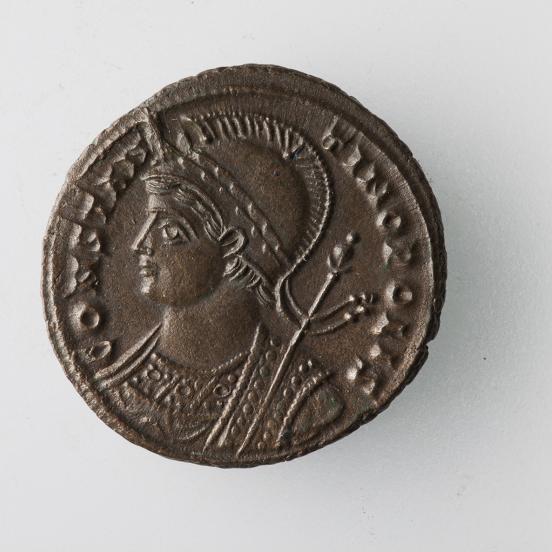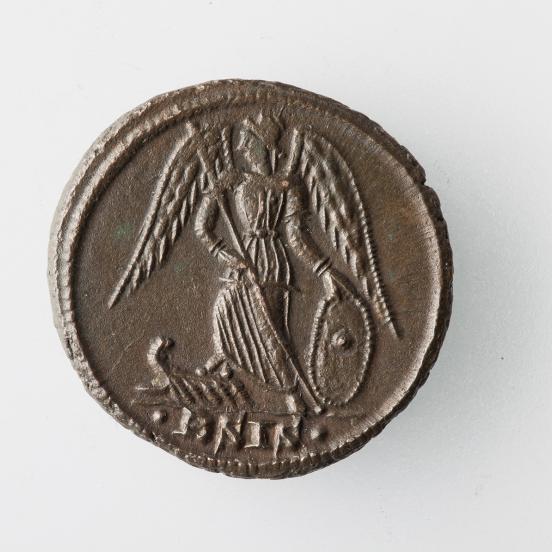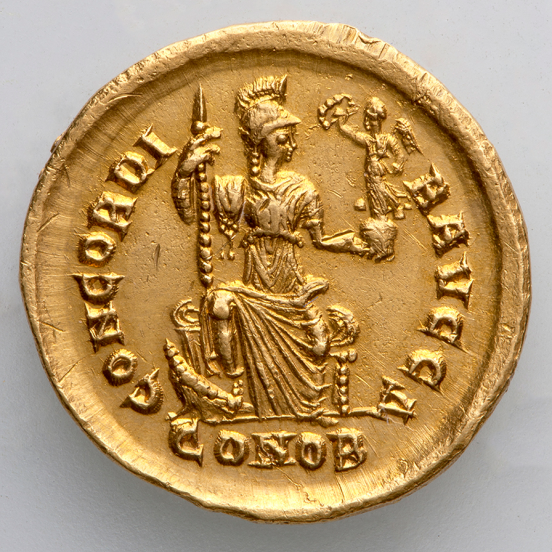Foundation of Constantinople
The gradual extension of the former Greek colony, Byzantion, dating back to some 1000 years, into an enormous metropolis began after 324, when Constantine I (306-337) acquired sole power in the whole empire. The emperor’s foresight is witnessed by the fact that he chose a location for the new capital of the Empire in a strategically and commercially important area, namely on the shore of the Bosporus, the passage between the Aegean and the Black Sea. The city bearing the name of its founder Constantinopolis (Constantinople, today Istanbul) was officially and ceremonially inaugurated on 11 May 330.
According to ancient traditions, the new city was personified by a female figure with Hellenistic roots who became a worthy pair of the goddess Rome. She was depicted in several genres of art, such as textiles and silversmith’s work, and on coins. The depictions and circular inscriptions on coins were always an integral part of the toolkit of imperial propaganda. Thus series of copper coins issued en masse in almost all the mints of the empire commemorated the foundation of the new capital. The obverse of the coins usually showed an allegoric female figure in a festive attire looking to the left and wearing a crested helmet on her head, which often had a laurel wreath. An ornamented sceptre (sceptrum) can be seen at her left shoulder, which can be interpreted as an insignia of power. The inscription clearly refers to the profound event in the life of the Roman Empire: CONSTANTINOPOLI(S). On the reverse as a reference to the emperor’s glorious deed the goddess of victory, Victoria, is represented. She is stepping on the prow of a ship holding a sceptrum and a shield. This type of coin was minted for more than 10 years.
During the 4th century, the old and new capital, Rome and Constantinopolis, emphasising their equality, were often depicted together on coins. The representation of Constantinopolis on its own became customary in the last decades of the 4th century, which was connected with the western-eastern final division of the empire. Between 397 and 402 a solidus (gold coin) was minted for the Western Roman Emperor, Honorius, in Constantonopolis. On its reverse Constantinopolis appeared in full pomp with helmet sitting on the throne , a spear in his right hand, while in the left hand there is a globus symbolising the universe on which stands Victoria holding a wreath.



